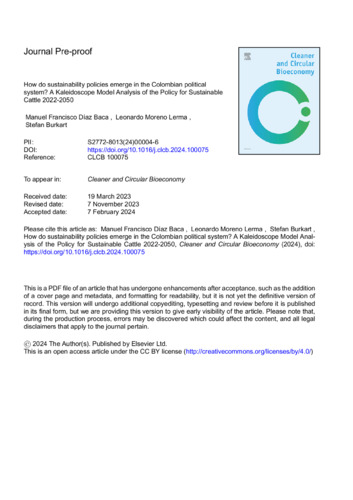How do sustainability policies emerge in the Colombian political system? A Kaleidoscope Model Analysis of the Policy for Sustainable Cattle 2022-2050
Environmental concerns such as deforestation, loss of biodiversity, and greenhouse gas emissions have reached preoccupying levels globally, for which the governments of different countries have committed to mitigation actions. In Colombia, one of the most ambitious initiatives to contribute to the commitments is the Policy for Sustainable Cattle 2022-2050 (Política para la Ganadería Bovina Sostenible 2022-2050), whose purpose is to promote the transition from traditional cattle farming to sustainable production systems and value chains. This study analyzes the construction process of the policy and determines the factors that allowed the change in public policies towards more sustainability. For this, a documentary analysis is carried out with a qualitative-descriptive approach consulting primary and secondary sources. As a theoretical framework, the Kaleidoscope Model of Policy Change is used, emphasizing on the first three stages, namely a) Agenda Setting, b) Design, and c) Adoption, and delving into the fourth stage of Implementation. The results reveal that multiple factors allowed the development of the policy, such as the need to face the environmental crisis, international summits that highlighted the problem, previous policies and, in general, an accumulation of experiences and knowledge. It became also evident that the main challenges for this policy have been the lack of coordination among the different national governments, as had its own vision of sustainability, in addition to the complexity of coordinating sustainability and competitiveness criteria among the ministries. It is concluded that although the development of the policy is a first step in the transition to sustainability, there are still many challenges ahead for change to be expressed in concrete actions.

